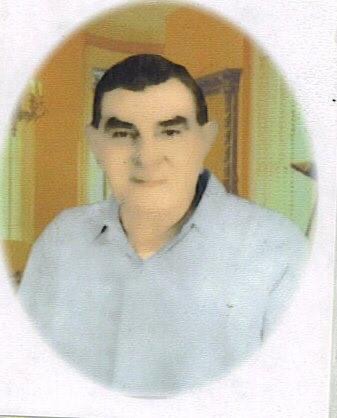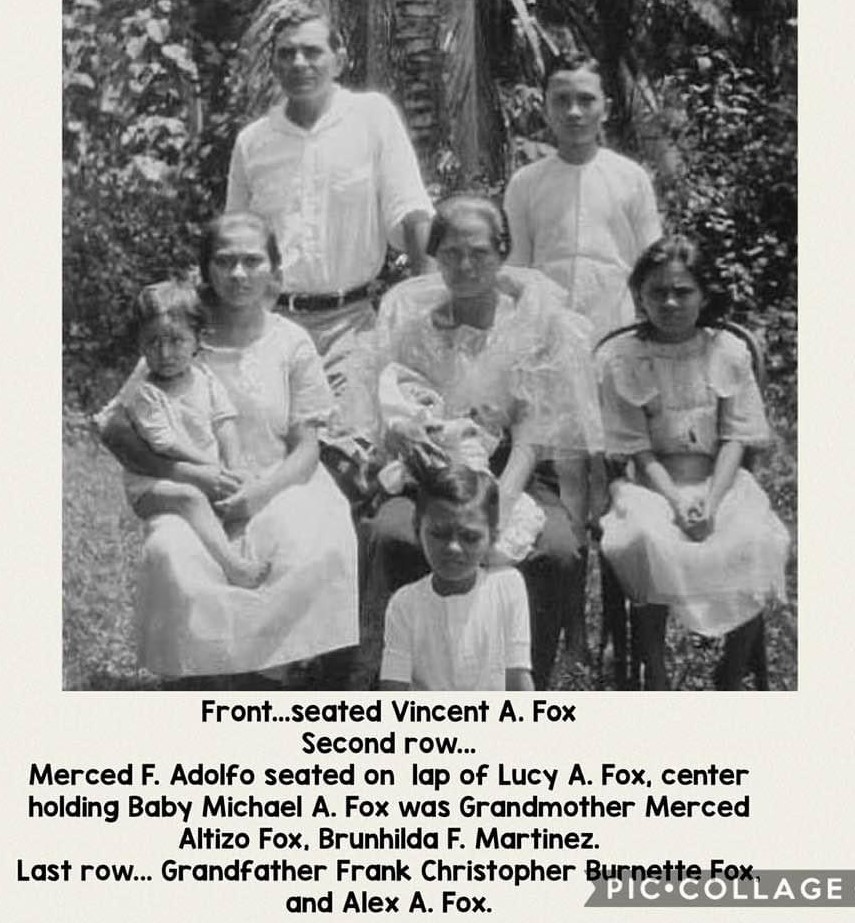|
January 30, 2022 Do you have more information about Frank Christopher B. Fox? I am his granddaughter and am interested more about him. Thank you! Amy Fox Adolfo Svistoonoff aakvns_500@icloud.com February 2, 2022 Hello Tom, Thank you for responding to my inquiry about my grandfather Frank Christopher B. Fox. I believe he had 10 children. They were Alex, Sr. Lucy (an RVM nun), (Joseph, Peter, both died young) Brunhilda, Vincent, Merced, Michael, Emily and Mary. With the exception of Aunt Mary, everyone had joined the innumerable caravan of our Lord already.  Frank Christopher B. Fox  Here’s an article written by journalist Antonio Figueroa of Davao in the Past: THIS IS DAVAO OF THE PAST. Frank Christopher Fox ---Amy Fox Adolfo Svistoonoff's Grandfather. by Historian Antonio Figueroa Feb.12, 2021 Frank C. Fox, Thomasite educator by Antonio V. Figueroa One of few Thomasites (so named after the Army transport USS Thomas they embarked on) assigned in Davao district during American rule, Frank Christopher Fox, born on April 2, 1868 in Bronx, New York, was part of the first batch of American educators sent to the islands in 1901 after the United States took over the Philippines from Spain in 1898. The other Thomasites assigned in Davao district were Theodore W. Barnett, Jesse B. Smoyer, and R. L. Clute, detailed at Baganga, Davao Oriental; Carson Calhoun, Leora Day, Frederic W. Abbott, Maud Jarman, and Rudolf F. Nyman, in Davao City; William Parson, in Mati City, Davao Oriental; and Orville W. Wood, in Santa Cruz, Davao del Sur. The educators were under the supervision of a deputy district superintendent, who oversaw 20 native teachers in a similar number of schools. As an English teacher, Fox was initially assigned in Cateel, Davao Oriental, but was later transferred to Caraga, where he settled after marrying a mestiza from a pioneering migrant family. As educator, he was earning $125 monthly from the U.S. government but as soon as the supervision of the Bureau of Education shifted to the colonial administration in Manila, the teachers were paid in devalued Mexican pesos. By 1905, when Fox was in Caraga, the town, described by then American district governor as showing no marked advancement, was composed of six barrios and 11 villages, populated chiefly by Mandayas, and hosted about 65,000 hills of hemp, 3,500 cocoanuts, and 3,000 cattle. Fox married Merced Altizo, from a huge clan in Davao and Surigao regions. The union bore 11 children, namely Alex, Peter (who died at early age), Lucy (a Religious of the Virgin Mary nun), Brunhilda (also known as Nene Fox-Martinez), Vincent, Joseph (died as a child), Merced, Michael, Emily, and Mary. Briefly, prior to the birth of Mary, the youngest in the brood, Fox went to Zamboanga, then the administrative center of the colonial government in Mindanao, to check out prospects but did not find any that fit his expectation. Decades later, the Fox family moved to Tubigon, Bohol, hometown of the Altizo clan. The couple’s oldest grandchild, Amy Svistoonoff, daughter of Inocentes Zanoria Adolfo and Merced Altizo Fox (whose husband became municipal treasurer of Caraga), is the spitting image of her grandmother. During this time, the town, home of a weather station in the south, had a small dock that hosted launches that hauled hemp to the Santa Ana wharf in Davao town. As foreigner and educator, Fox became a highly respected personality and residents admired him even more when he married into a well-recognized family. After deciding to permanently reside in Caraga, he bought lands and built a huge household. Merced, at the time, had already arrived in Caraga and starting her own family. When war broke out, Fox and son Vincent were among those the Japanese rounded up and sent to an internment camp in Davao City before they were shipped to the University of Santo Tomas, a Catholic pontifical institution in Sampaloc district, Manila, which was converted by the Japanese Imperial forces into a concentration camp. After liberation came in 1945, all surviving American prisoners of war were promptly processed and repatriated. Frank was one of them. Fox and son Vincent landed in Chicago where they were hospitalized and nurtured back to health. While in the U.S., he briefly worked with Texaco Gas Station before he returned to the Philippines to represent the company and retired. When his wife died in Caraga, Fox took Susanna Imperial, his children’s nanny, as second wife. He died in Tubigon, Bohol, at age 84. The marriage did not bear any child. (Family details courtesy of Amy Fox Adolfo Svistoonoff, Frank Fox’s oldest granddaughter.) Here’s a collage pictures of the Fox Family without Auntie Mary.  or be added to the POW/Internee e-mail distribution list, please let me, Tom Moore, know. Thanks! |